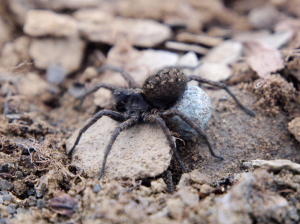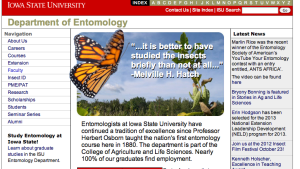About a year ago I started to write blog posts regularly - this was partially because I was invited to give a talk on social media in Academia at the annual meeting of the Entomological Society of Canada (held this past November). It was around the same time that I started using Twitter more regularly. Up until that point, I was a casual user of twitter, and did not understand it.
After one year, I can sum up my feeling about blogging, twitter and social media in one word: exhilarating.
Writing regular blog posts has changed my professional life. It has allowed me to hone my skills as a writer, and learn to write in a different way - a way that attempts to bring science to a broader audience - an audience beyond the walls of the University in which I work. An audience that is articulate, intelligent, interested, engaging, and passionate. Writing blog posts has forced me to articulate clearly about my research, and to think about what I do as a scientist, and why I work on small, obscure animals. It helps me think about the sort of advice I might give to graduate students, whether it be reviewing papers or thinking about how to succeed as a Professor.
I have learned that there is an incredible community “out there” and this community has something to offer. I can now keep track of key happenings in science by following Malcolm Campbell, Ed Yong, Carl Zimmer, and others. I can learn about Higher Education in Canada by paying attention to Melonie Fullick, and I can learn more about my own University thanks to McGill’s amazing twitter feed. I can learn about Entomology around the globe, and take part in inspired, meaningful (and sometimes hilarious) conversations with new friends and colleagues including Morgan Jackson, Derek Hennen, Dr. Dez, Chris MacQuarrie, Bug Girl, the Bug Chicks, Crystal Ernst, Alex Wild, and many more…. These interactions are barrier-free. It doesn’t matter if the conversations are among Professors and undergraduate students, or with high school students. It’s about keeping the conversations relevant, of high quality, and respectful.
I now have new colleagues from different countries - colleagues that I now collaborate with, including Graham Scott in the UK - he and I share many similar ideas about the value of field work in University courses. Or Leslie Brunetta - she and I are now discussing neat ways to take spider silk research into new areas. Social media has also changed how I teach, and using blogs and twitter in the classroom has allowed students to see value in their course work that goes beyond the classroom. My undergraduate students tell me that they feel their University education is more valuable when they can interact with other experts.
Writing blog posts allow me another way to share my passion for all things Arachnida, from spiders to Opiliones and Pseudoscorpions. Yes, our eight-legged friends are awesome, whether they are on your ceiling, in your windowsills, or living on the tundra. Social media has allowed me to write about things that I write about anyway - I am constantly answering emails about spiders, whether it be identification help, or general queries about venomous spiders. By writing a blog post about these topics, (including “spiders do not bite” - my most popular post!), I can now refer people to posts instead or writing emails. Writing posts does take some time, but it is a productive use of time.
On a more personal level, social media has given me meaningful and important connections to people: really good people. People that I respect, people that are now part of an evergroing circle of friends. We need to surround ourselves with good people. Life seems to throw a lot of challenges - whether it is managing with the work-life balance, coming to grips with local and global tragedies, constant worrying about the health of our planet, or struggling with mental or physical health. It’s a big, sometimes scary and often intimidating world out there - and it’s easy to feel insular, lonely, and scared. Social media is one antidote. Social media is not a cure, nor should it be used as escapism - instead, I am saying that it brings a ray of light, a smile and a shot of optimism. I am grateful to have become a part of this community.
As my PhD student Crystal Ernst and Bug Girl discussed (partially reflected in this post): social media is a tool that allows for productive discussion about science, life and the confluence of these. It’s a discussion that can take part in a REALLY long hallway - a hallway that is inclusive, honest, and filled with bright lights.
I will finish with a big “thank you” to all my followers and friends (of this blog, and on twitter). Your interest, comments and enthusiasm are so important to me and highly valued.
I wish everyone terrific end to 2012 and I look forward to continued discussions into the new year!

